Alan Dorin
Motion-based video compression for resource-constrained camera traps
May 23, 2024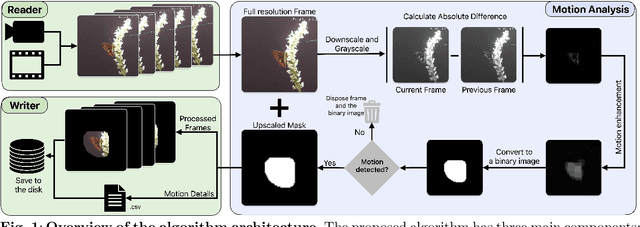
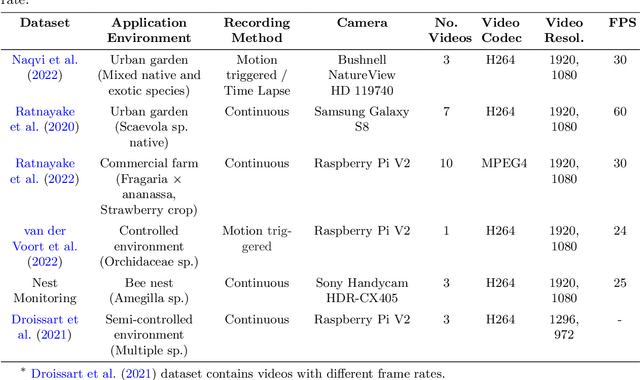
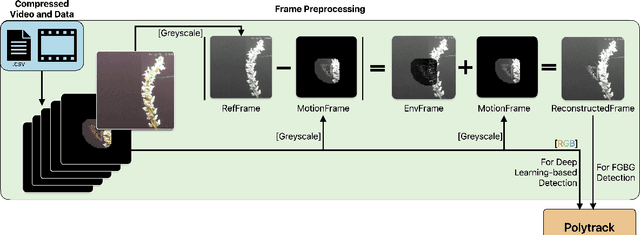
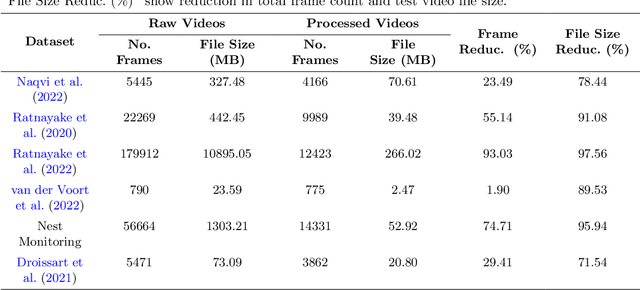
Abstract:Field-captured video allows for detailed studies of spatiotemporal aspects of animal locomotion, decision-making, and environmental interactions. However, despite the affordability of data capture with mass-produced hardware, storage, processing, and transmission overheads pose a significant hurdle to acquiring high-resolution video from field-deployed camera traps. Therefore, efficient compression algorithms are crucial for monitoring with camera traps that have limited access to power, storage, and bandwidth. In this article, we introduce a new motion analysis-based video compression algorithm designed to run on camera trap devices. We implemented and tested this algorithm using a case study of insect-pollinator motion tracking. The algorithm identifies and stores only image regions depicting motion relevant to pollination monitoring, reducing the overall data size by an average of 84% across a diverse set of test datasets while retaining the information necessary for relevant behavioural analysis. The methods outlined in this paper facilitate the broader application of computer vision-enabled, low-powered camera trap devices for remote, in-situ video-based animal motion monitoring.
Markerless retro-identification complements re-identification of individual insect subjects in archived image data of biological experiments
May 22, 2024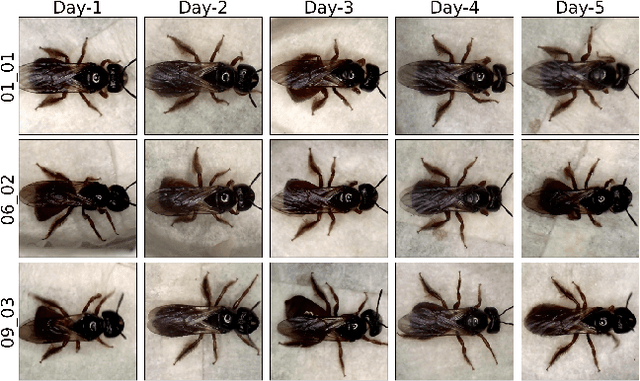
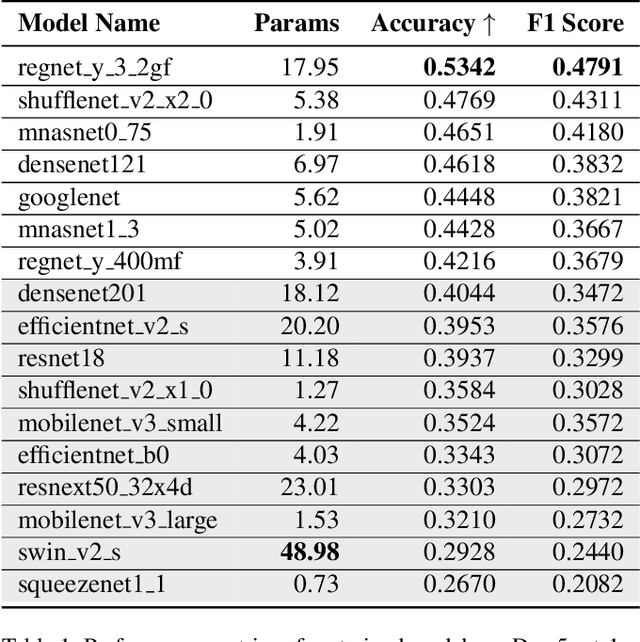
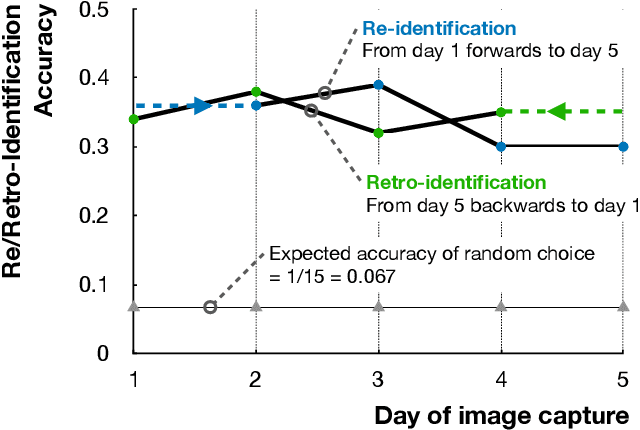
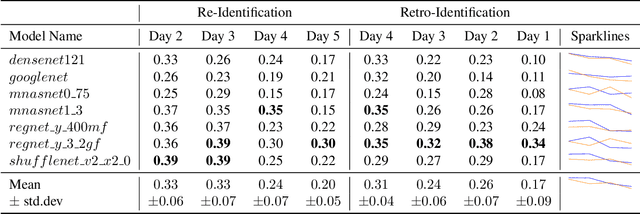
Abstract:This study introduces markerless retro-identification of animals, a novel concept and practical technique to identify past occurrences of organisms in archived data, that complements traditional forward-looking chronological re-identification methods in longitudinal behavioural research. Identification of a key individual among multiple subjects may occur late in an experiment if it reveals itself through interesting behaviour after a period of undifferentiated performance. Often, longitudinal studies also encounter subject attrition during experiments. Effort invested in training software models to recognise and track such individuals is wasted if they fail to complete the experiment. Ideally, we would be able to select individuals who both complete an experiment and/or differentiate themselves via interesting behaviour, prior to investing computational resources in training image classification software to recognise them. We propose retro-identification for model training to achieve this aim. This reduces manual annotation effort and computational resources by identifying subjects only after they differentiate themselves late, or at an experiment's conclusion. Our study dataset comprises observations made of morphologically similar reed bees (\textit{Exoneura robusta}) over five days. We evaluated model performance by training on final day five data, testing on the sequence of preceding days, and comparing results to the usual chronological evaluation from day one. Results indicate no significant accuracy difference between models. This underscores retro-identification's value in improving resource efficiency in longitudinal animal studies.
Image background assessment as a novel technique for insect microhabitat identification
May 26, 2023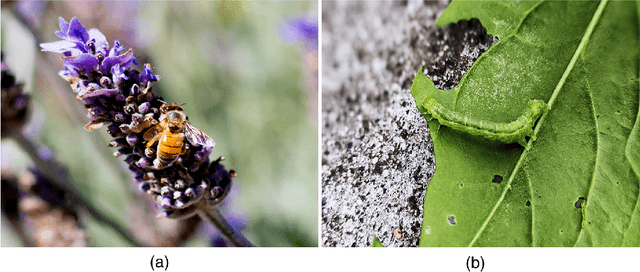

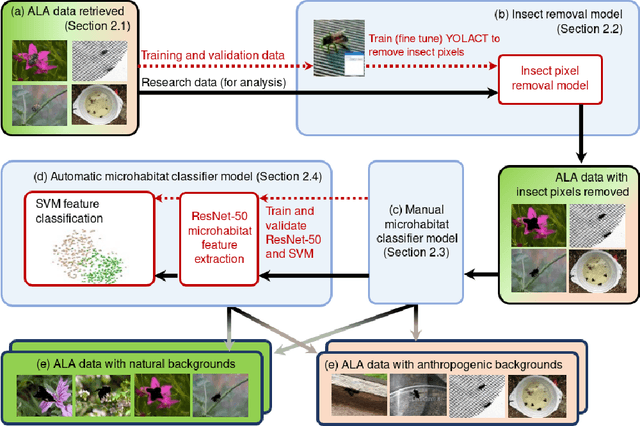

Abstract:The effects of climate change, urbanisation and agriculture are changing the way insects occupy habitats. Some species may utilise anthropogenic microhabitat features for their existence, either because they prefer them to natural features, or because of no choice. Other species are dependent on natural microhabitats. Identifying and analysing these insects' use of natural and anthropogenic microhabitats is important to assess their responses to a changing environment, for improving pollination and managing invasive pests. Traditional studies of insect microhabitat use can now be supplemented by machine learning-based insect image analysis. Typically, research has focused on automatic insect classification, but valuable data in image backgrounds has been ignored. In this research, we analysed the image backgrounds available on the ALA database to determine their microhabitats. We analysed the microhabitats of three insect species common across Australia: Drone flies, European honeybees and European wasps. Image backgrounds were classified as natural or anthropogenic microhabitats using computer vision and machine learning tools benchmarked against a manual classification algorithm. We found flies and honeybees in natural microhabitats, confirming their need for natural havens within cities. Wasps were commonly seen in anthropogenic microhabitats. Results show these insects are well adapted to survive in cities. Management of this invasive pest requires a thoughtful reduction of their access to human-provided resources. The assessment of insect image backgrounds is instructive to document the use of microhabitats by insects. The method offers insight that is increasingly vital for biodiversity management as urbanisation continues to encroach on natural ecosystems and we must consciously provide resources within built environments to maintain insect biodiversity and manage invasive pests.
Spatial Monitoring and Insect Behavioural Analysis Using Computer Vision for Precision Pollination
May 10, 2022

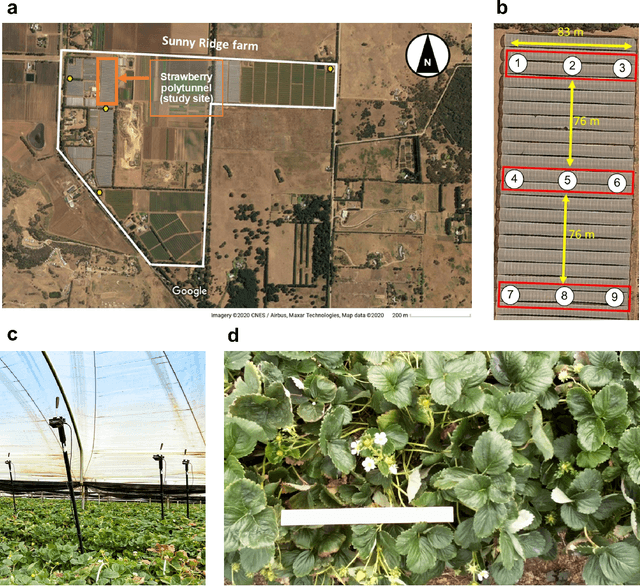
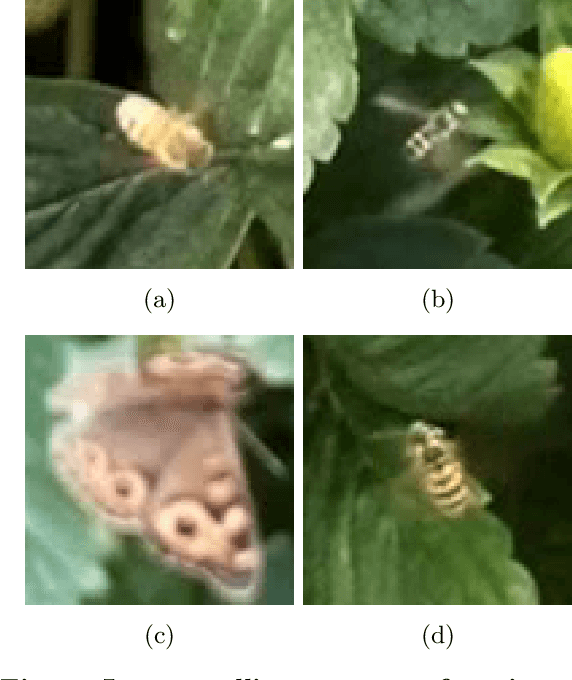
Abstract:Insects are the most important global pollinator of crops and play a key role in maintaining the sustainability of natural ecosystems. Insect pollination monitoring and management are therefore essential for improving crop production and food security. Computer vision facilitated pollinator monitoring can intensify data collection over what is feasible using manual approaches. The new data it generates may provide a detailed understanding of insect distributions and facilitate fine-grained analysis sufficient to predict their pollination efficacy and underpin precision pollination. Current computer vision facilitated insect tracking in complex outdoor environments is restricted in spatial coverage and often constrained to a single insect species. This limits its relevance to agriculture. Therefore, in this article we introduce a novel system to facilitate markerless data capture for insect counting, insect motion tracking, behaviour analysis and pollination prediction across large agricultural areas. Our system is comprised of Edge Computing multi-point video recording, offline automated multi-species insect counting, tracking and behavioural analysis. We implement and test our system on a commercial berry farm to demonstrate its capabilities. Our system successfully tracked four insect varieties, at nine monitoring stations within a poly-tunnel, obtaining an F-score above 0.8 for each variety. The system enabled calculation of key metrics to assess the relative pollination impact of each insect variety. With this technological advancement, detailed, ongoing data collection for precision pollination becomes achievable. This is important to inform growers and apiarists managing crop pollination, as it allows data-driven decisions to be made to improve food production and food security.
Past Visions of Artificial Futures: One Hundred and Fifty Years under the Spectre of Evolving Machines
Jun 04, 2018Abstract:The influence of Artificial Intelligence (AI) and Artificial Life (ALife) technologies upon society, and their potential to fundamentally shape the future evolution of humankind, are topics very much at the forefront of current scientific, governmental and public debate. While these might seem like very modern concerns, they have a long history that is often disregarded in contemporary discourse. Insofar as current debates do acknowledge the history of these ideas, they rarely look back further than the origin of the modern digital computer age in the 1940s-50s. In this paper we explore the earlier history of these concepts. We focus in particular on the idea of self-reproducing and evolving machines, and potential implications for our own species. We show that discussion of these topics arose in the 1860s, within a decade of the publication of Darwin's The Origin of Species, and attracted increasing interest from scientists, novelists and the general public in the early 1900s. After introducing the relevant work from this period, we categorise the various visions presented by these authors of the future implications of evolving machines for humanity. We suggest that current debates on the co-evolution of society and technology can be enriched by a proper appreciation of the long history of the ideas involved.
* To appear in Proceedings of the Artificial Life Conference 2018 (ALIFE 2018), MIT Press
Digital Genesis: Computers, Evolution and Artificial Life
Dec 07, 2015Abstract:The application of evolution in the digital realm, with the goal of creating artificial intelligence and artificial life, has a history as long as that of the digital computer itself. We illustrate the intertwined history of these ideas, starting with the early theoretical work of John von Neumann and the pioneering experimental work of Nils Aall Barricelli. We argue that evolutionary thinking and artificial life will continue to play an integral role in the future development of the digital world.
 Add to Chrome
Add to Chrome Add to Firefox
Add to Firefox Add to Edge
Add to Edge